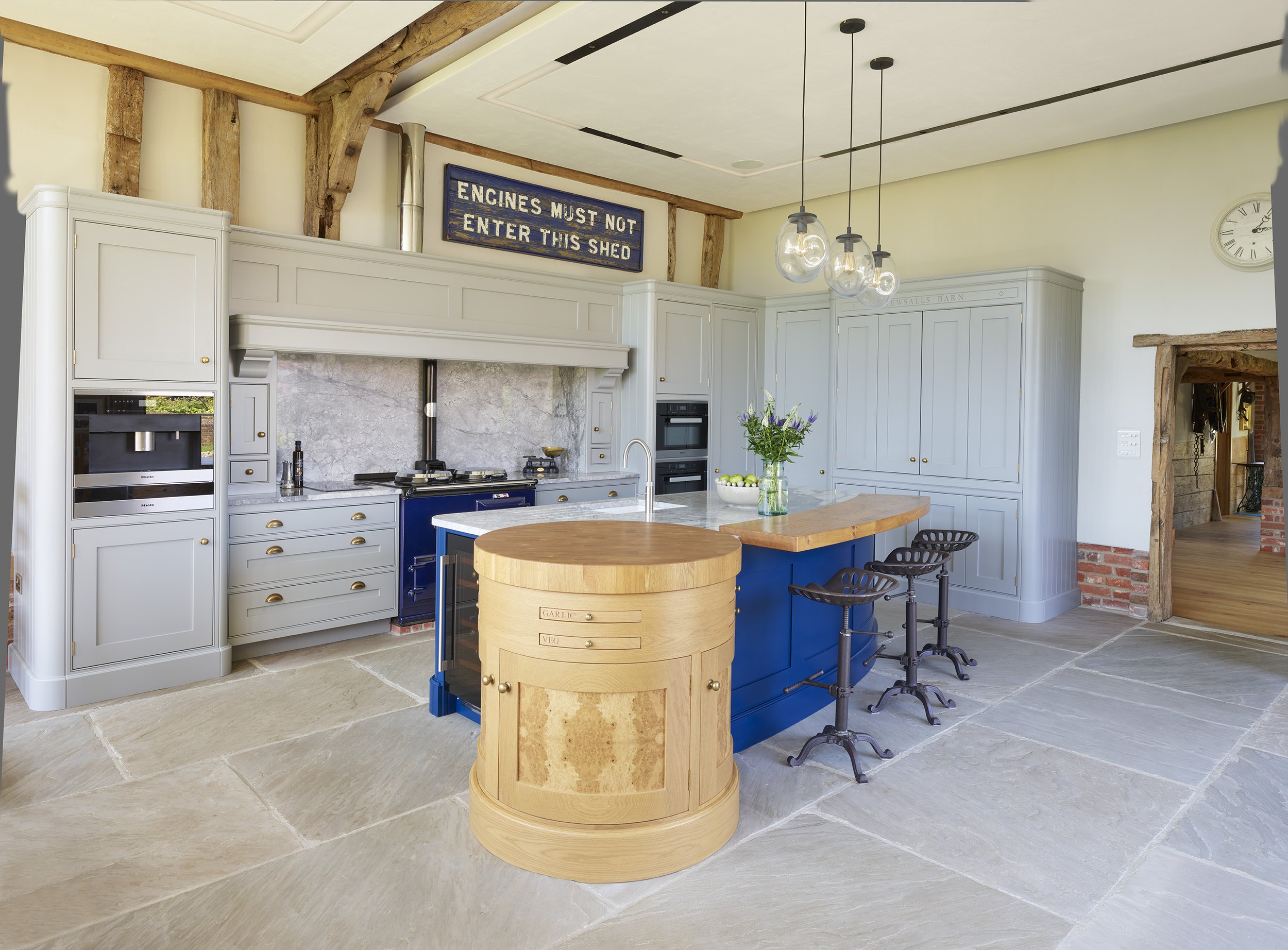What are the main differences and benefits between In-frame and Lay-on kitchen doorstyles?
Kitchens are the heart of every home. Though their purposes may differ, each homeowner wants their kitchen to be perfect.
Kitchen doorstyles come in a variety of different shapes and sizes. At Ray Munn Kitchens, every kitchen design we plan is bespoke, as like people, no two kitchens are ever the same. Two of the most popular doorstyle options we offer are an in-frame style and a lay-on style, and they’re nearly always talked about when we’re discussing ‘Shaker kitchens’ with our customers.
Lay-on and in-frame kitchens both have their unique benefits and differences, and we are frequently asked what they are.
So what is the main difference?
Fundamentally, it’s all to do with the frame of the kitchen, and in particular where the hinges are located.
An in-frame kitchen has its doors located within a frame that is attached to the front of the carcass of the kitchen furniture, and you can clearly see the hinges.
These kitchens offer a traditional elegance to your space and are a great choice if you’re after a classic design. The visible hinges are part of the charm of this kitchen and contribute to what is cabinet making at its best!
A lay-on kitchen door sits directly on the top of the carcass so you can’t see the hinges or the carcass of the kitchen itself.
It’s the perfect choice for anyone wanting a more contemporary feel or a simpler look to a Shaker design kitchen.
Price points of lay-on and in-frame kitchens
Another important consideration is the cost. Because of the intricacies of the craftmanship and amount of wood used, in-frame Shaker kitchens cost about 20% more than their lay-on counterparts, so if you’ve got a big kitchen, this could be a decision-maker for you.
Other differences
In-frame doors are typically made of solid timber (another contributor to their increased cost), while lay-on doors can be made using many different materials, including laminate, veneer and even glass.
In-frame cabinets tend to be painted, whilst lay-on doors are usually only available in a fixed colour palette of finishes, although some of our lay-on ranges are also offered in any colour of your choice!
Lay-on doors use a self-closing, concealed hinge which is sprung, whereas in-frame doors do not allow for this. However, the drawer runners in both in-frame and lay-on cabinetry are self-closing.
In summary, there are many benefits to each style, so it's important to consider which one will be best for your space and budget!
1. In-frame kitchen doors are set into the surrounding frame of the cabinet, while lay-on kitchen doors are attached to the front of the cabinet with hinges.
2. In-frame doors usually have a more traditional look and feel to them, while lay-on doors appear sleeker, and more modern and contemporary.
3. In-frame doors are typically made of solid wood, whilst lay-on doors can be made using many different materials including laminate, veneer and even glass.
4. In-frame doors usually have a solid wood frame that is visible when the door is closed.
5. Lay-on doors are flush with the cabinet and don't have a frame.
6. The hinges of a lay-on door are always hidden within the cabinet, whereas part of the charm of an in-frame door is the feature hinge detail!
7. In-frame doors tend to be painted or stained to match the carcass of each cabinet, whilst lay-on doors are usually only available in a fixed colour palette of finishes, which in turn can be contrasted or complemented by the finish of the carcass.
At Ray Munn Kitchens, we offer both of these kitchen styles, along with a wide selection of both traditional and modern kitchens, so no matter what doorstyle you decide on, our team are sure to design you a dream kitchen that will match your home, style and taste perfectly!





